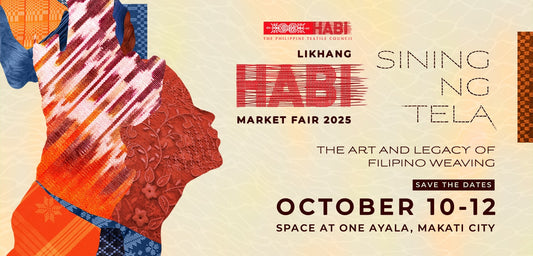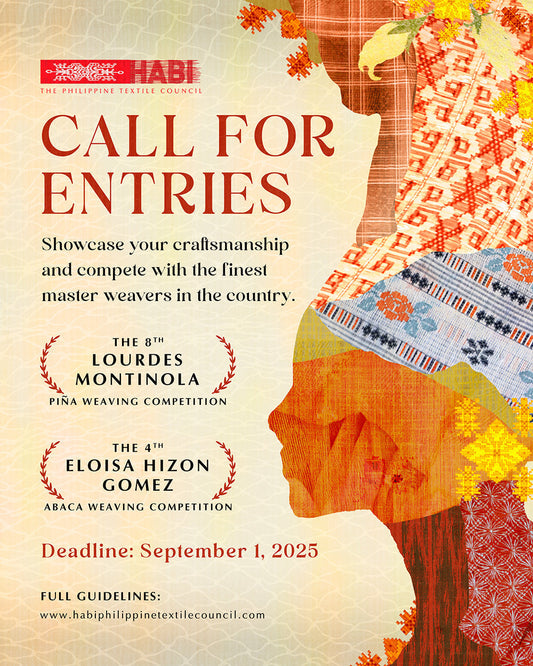Be A Winner
Enter your best works in competition with other master weavers. Cash prizes await!

The 7th Lourdes Montinola Piña Weaving Competition Guidelines
Awards will be given to artists and artisans who work —singly or collaboratively—to create extraordinary piña cloth.
The cloth to be awarded is created as a long or short panel, and can be made to achieve any of the full range of artistic ambition in cloth making. The panels can be woven to be exceptional, and/or embellished (beadwork, embroidery, etc.), and/or layered, and/or folded, tucked, pleated, or otherwise made into a new “body,” and/or punctured for cut-openwork (calado or doble calado) introductions to the weave, and/or appliquéd, and/or shadow appliquéd (sombrado). And others techniques still unknown or untried.
The guidelines that both artists/artisans and the jury will abide by are as follows:
1. A minimum requirement
The cloth to be entered into consideration for the prizes has to be at least two (2) meters long. It can be longer. There is no stricture about the width.
2. Quality of making
The cloth will be evaluated for excellence of execution of the entire range of processes used; including the knotting of the fiber itself; the control over the weaving tension (even if the intended tension is to produce loose weave); the balance between the tensile strengths of piña and other fibers that may be woven with the pineapple fiber to make the cloth; the dyeing or other forms of coloring; the physical relationship of embellishment to woven cloth; and so forth.
3. Quality of innovation and use of imagination
The cloth will be evaluated for the freshness and excellence of the ways of handling piña as a material. Thus, the Award will commend the creation of blends with other natural fibers (Musa textilis or abaka, cotton, linen, ramie, silk and so forth, so long as piña makes up more than 50% of the body of the cloth); of new possibilities for couture; and of new procedures to be applied in the making of pineapple fiber cloth.
The 3rd Eloisa Hizon-Gomez Abaca Weaving Competition Guidelines
Since pre-Hispanic times, lustrous abaca fibers have been hand-loomed into native textiles -- the delicate lupis or nipis of the Visayas, the versatile sinamay of Southern Luzon, the ikat or resist-dyed Bagobo inabal, Tboli tnalak, Blaan tabih, and Mandaya dagmay of the Mindanao highlands.
Abaca fiber is from Musa textilis, a non-edible banana that is native to the Philippines. Although called Manila hemp, abaca is not a hemp. From the mid-1800s through the early 1900s, abaca was one of three major exports of the Philippines.
The Eloisa Hizon-Gomez Abaca Weaving Competition has been organized to further animate the use of abaca in weaving and other creative expressions.
Winning works will remain the property of their makers after HABI fully documents them. HABI will also assist in selling the cloths.
Specifics:
The cloth to be entered into consideration for the prizes has to be woven exclusively of abaca fiber, and be at least three (3) meters long or longer, if so desired, and of any width.
Aspects of judging:
1. Excellence in execution, showing skill and technique, including knotting and control of the weaving tension.
2. Design and weaving qualities specific to the culture of the weaving community.
3. Aesthetics.
4. Dyeing or other forms of coloring.
5. Quality of innovation, if any.
Awards
Three awards will be given to artists and artisans who work —singly or collaboratively—to create extraordinary abaca.
Submission Form
Name:
Address:
Mentor:
Age of weaver:
Weaving experience:
How long it took to make the piece:
Description of the process:
Signature:
Date:
Submit by September 16, 2024.




